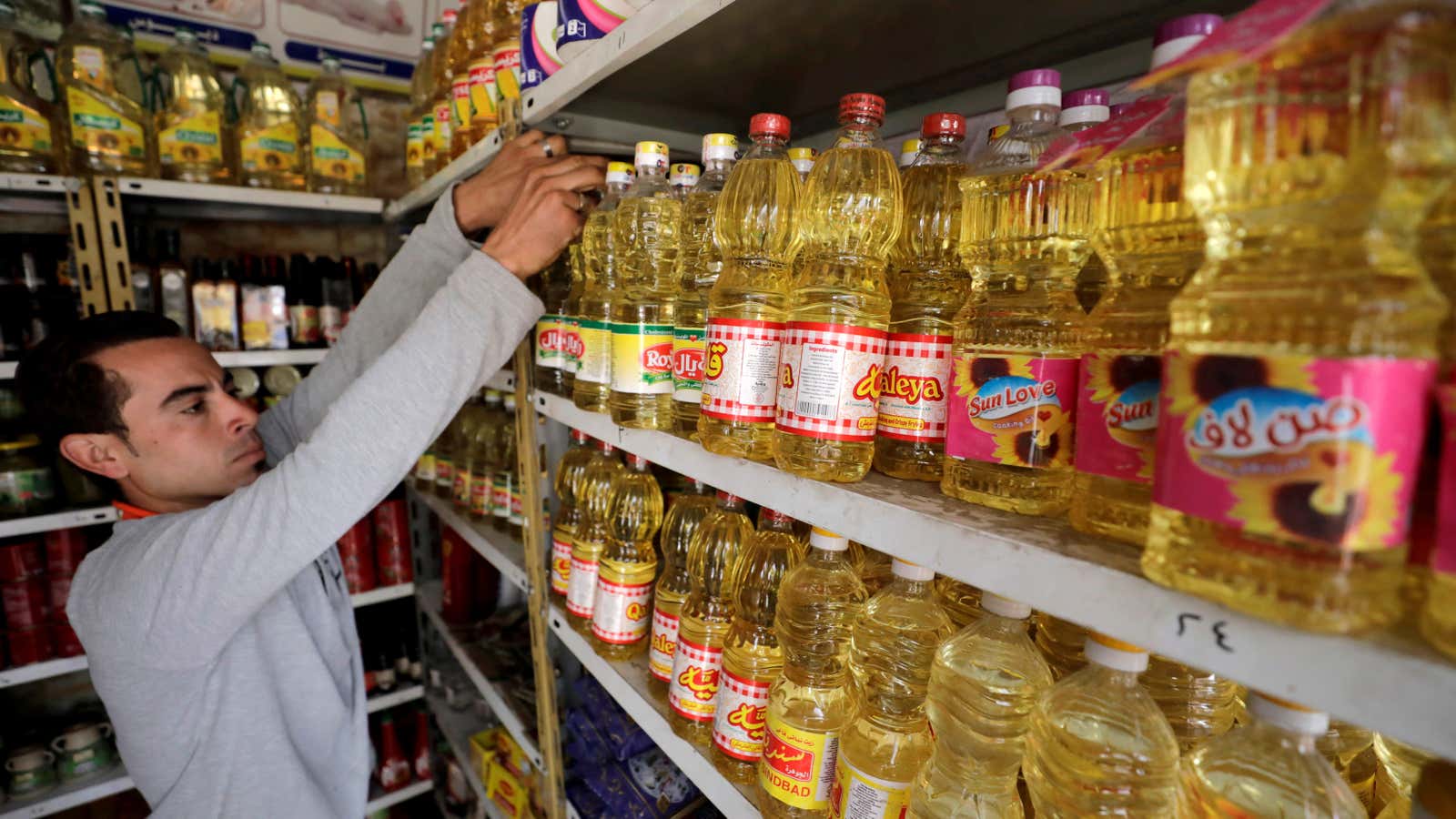Food prices around the world fell for the second consecutive month in May, eased by a drop in vegetable oil prices, according to the United Nations Food and Agriculture Organization (FAO). The FAO’s global food price index dipped 0.6% in May from the month before. In April, the drop was 0.8%. The index measures the monthly change in average prices of meat, dairy, cereals, vegetable oils, and sugar.
But the index remains near its recent high set in March, as the Russia-Ukraine war continues to disrupt global trade. The index reached its highest point in March since 2011.
Over the past few years, food prices have risen sharply due to pandemic-related supply chain shortages, severe weather, and, more recently, export bans and an ongoing war in Ukraine.
Vegetable and dairy prices drop globally
The drop in vegetable oil prices is in part due to Indonesia lifting its brief export ban on palm oil last month, which was put in place at the end of April as domestic cooking oil prices soared. The ban came as the global supply of vegetable oil was already being squeezed by the war in Ukraine, which, before the war, was the largest exporter of sunflower oil. Dairy prices dropped too, due to lockdowns in China reducing demand.
Meat and wheat prices continue to rise amid the Russia-Ukraine war
Out of all the indices, cereal prices increased the most in May. Since Russia’s invasion of Ukraine in February, wheat prices have been climbing due to reduced production prospects in Ukraine and Russia—though prices remain below the record high reached in March 2008. In the US, wheat futures prices are up 48% since the start of 2022. Together Russia and Ukraine make up about 13% of the total global wheat production. The higher cereal prices also are in response to India’s export ban, which was put in to effect to address soaring domestic food prices and a lower wheat yield as a result of intense heat waves.
Meanwhile, meat prices rose to a record high due to supply chain disruptions in Ukraine, according to the FAO. In general, meat prices have soared during the pandemic due to supply chain snags, ongoing labor shortages, and higher fertilizer and fuel costs.
